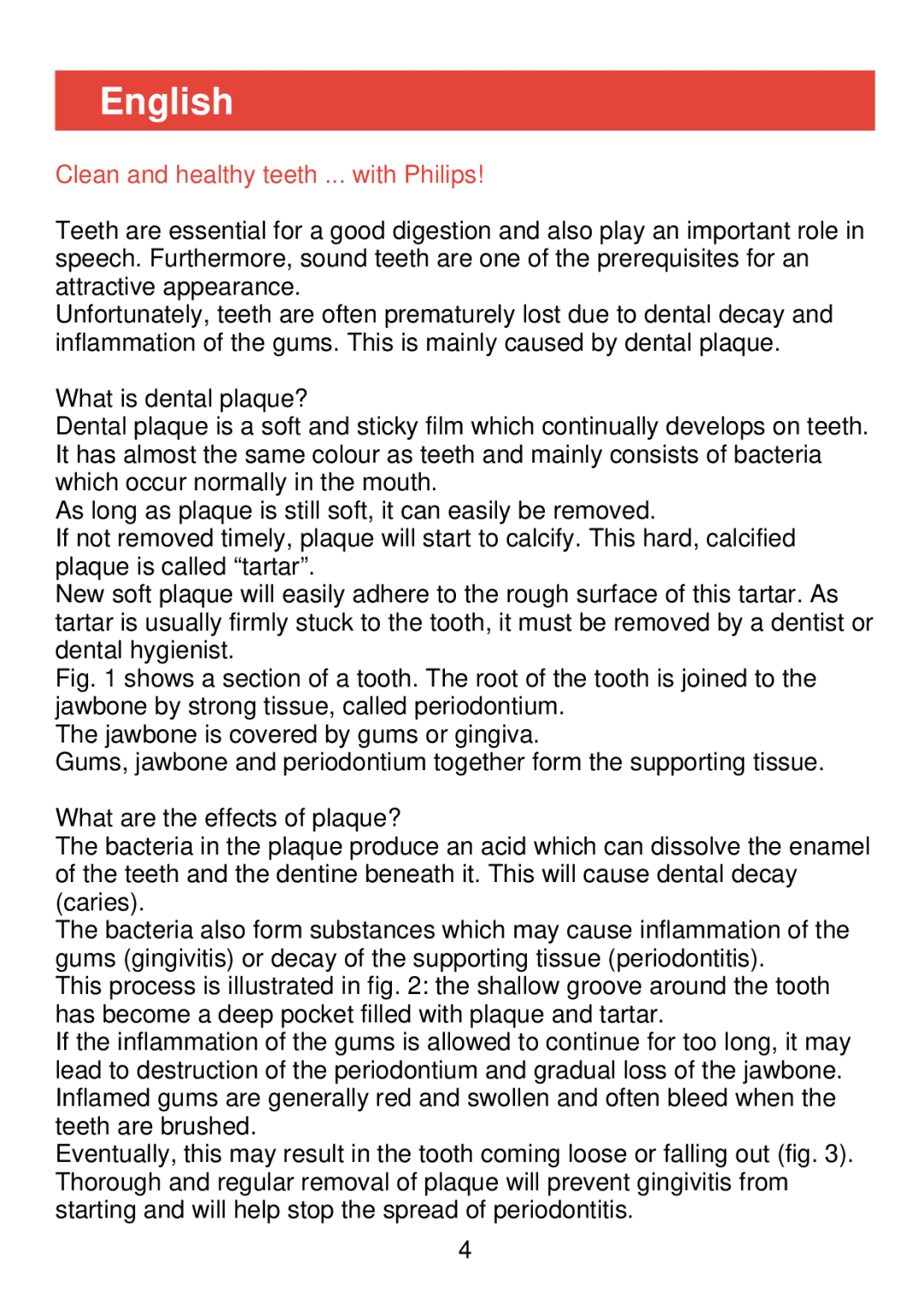English
Clean and healthy teeth ... with Philips!
Teeth are essential for a good digestion and also play an important role in speech. Furthermore, sound teeth are one of the prerequisites for an attractive appearance.
Unfortunately, teeth are often prematurely lost due to dental decay and inflammation of the gums. This is mainly caused by dental plaque.
What is dental plaque?
Dental plaque is a soft and sticky film which continually develops on teeth. It has almost the same colour as teeth and mainly consists of bacteria which occur normally in the mouth.
As long as plaque is still soft, it can easily be removed.
If not removed timely, plaque will start to calcify. This hard, calcified plaque is called “tartar”.
New soft plaque will easily adhere to the rough surface of this tartar. As tartar is usually firmly stuck to the tooth, it must be removed by a dentist or dental hygienist.
Fig. 1 shows a section of a tooth. The root of the tooth is joined to the jawbone by strong tissue, called periodontium.
The jawbone is covered by gums or gingiva.
Gums, jawbone and periodontium together form the supporting tissue.
What are the effects of plaque?
The bacteria in the plaque produce an acid which can dissolve the enamel of the teeth and the dentine beneath it. This will cause dental decay (caries).
The bacteria also form substances which may cause inflammation of the gums (gingivitis) or decay of the supporting tissue (periodontitis).
This process is illustrated in fig. 2: the shallow groove around the tooth has become a deep pocket filled with plaque and tartar.
If the inflammation of the gums is allowed to continue for too long, it may lead to destruction of the periodontium and gradual loss of the jawbone. Inflamed gums are generally red and swollen and often bleed when the teeth are brushed.
Eventually, this may result in the tooth coming loose or falling out (fig. 3). Thorough and regular removal of plaque will prevent gingivitis from starting and will help stop the spread of periodontitis.
4
